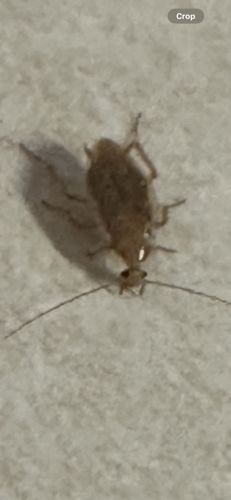Brown-banded cockroach
Scientific Name: Supella longipalpa
Order & Family: Blattodea, Ectobiidae (formerly Blattellidae)
Size: Typically 10-14 mm (0.4-0.55 inches) long.

Natural Habitat
Warm, dry, and elevated areas, such as behind picture frames, in appliances, behind cabinets, and in ceiling voids. Often found in homes and apartments, particularly in bedrooms and living rooms, rather than kitchens or bathrooms (though they can be found there too).
Diet & Feeding
Omnivorous scavengers. They feed on a wide variety of organic matter, including starchy foods, glues, wallpaper paste, books, and even nylon stockings. They require less moisture than some other cockroach species.
Behavior Patterns
Nocturnal, hiding during the day and becoming active at night to forage for food. They are known for their rapid reproduction rate. Males are good flyers, while females can only glide. They commonly drop their small, purse-shaped egg cases (oothecae) in hidden places, often attached to surfaces.
Risks & Benefits
Risks: Considered a pest, they can contaminate food and surfaces with bacteria (e.g., E. coli, Salmonella), allergens, and protozoans. They can exacerbate asthma and allergy symptoms, especially in children. They do not bite or sting. Benefits: Generally none to humans in a domestic setting; in natural ecosystems, they play a minor role as decomposers.
Identified on: 10/14/2025